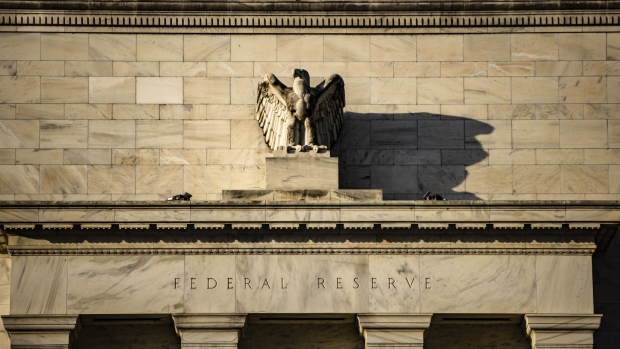Apr 9, 2021
Fed Looks Poised to Step Up Buying in Belly of Treasuries Curve
, Bloomberg News

(Bloomberg) -- The Treasury market’s weight has shifted around in the past year, meaning the Federal Reserve’s $80 billion monthly purchases no longer fit the way they’re supposed to.
A reevaluation of how much the central bank is buying of each maturity is in order, likely in the coming months, Lorie Logan, the New York Fed official who manages the purchases, said on Thursday. She told dealers in a speech that the Fed will “make minor technical adjustments to our purchase sectors and increase the frequency at which we update purchase allocations to remain roughly proportional” to supply.
Her comments made an especially big splash with 20-year Treasuries, as traders guessed they’ll see the biggest Fed increase. Strategists agree that 20-year bonds are ripe for attention, but also see maturities down to seven years also getting a lift.
When the Fed began buying Treasuries in March 2020 to calm the market during the pandemic panic, it targeted the sectors that were under the most stress, in quantities as large as $75 billion a day. By June, the program stabilized at $80 billion a month, and the decision of how much of each maturity was based on amounts outstanding at the time.
But supply didn’t stand still. The Treasury Department revived 20-year bond issuance in May, which together with increased sizes for other tenors caused the 7- to 20-year sector to grow to 13% of outstanding debt as of March 31, up from 10% in May 2020, according to JPMorgan Chase & Co. That’s likely to mean an increase of $3.1 billion a month to purchases in the sector, to $10.3 billion, offset by cuts to shorter-maturity sectors and Treasury Inflation-Protected Securities, JPMorgan strategists said in a report.
The Fed’s current purchase schedule runs through April 13, with a new one set to be released at 3 p.m. New York time that day. Under the current schedule, there have been two purchases a month in the 7- to 20-year sector targeting $3.625 billion.
Barclays Plc strategists Andres Mok and Anshul Pradhan in a report also predicted the 7- to 20-year sector would be “the biggest beneficiary” of a rebalance by the Fed, with about $3 billion of additional purchases at the expense of other buckets.
While the expected changes “should increase the weighted average maturity of Fed buying,” it’s distinct from the maturity extension that some have predicted the central bank will make in order to counter yield-curve steepening, TD strategists led by Priya Misra said in a note.
Though Logan has significant clout, it isn’t her decision. She works at the New York Fed, which implements policy on behalf of the Fed in Washington, but it’s leadership at the latter that makes the call, JPMorgan’s Jay Barry noted.
©2021 Bloomberg L.P.